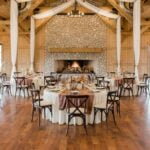Are you wondering how to dance at a wedding and make the experience even more memorable for everyone involved? Dancing is an integral part of any wedding celebration, bringing joy and excitement to both the guests and the couple. From the romantic first dance to lively group dances, knowing how to move on the dance floor can truly enhance the overall atmosphere of the event.
In this article, we will explore the various types of dances commonly performed at weddings, offer tips for choosing the right outfits and provide valuable advice for overcoming dance floor fears. Whether you’re a novice dancer or a seasoned pro, this guide will help you navigate the ins and outs of dancing at a wedding with confidence and grace.
One of the most anticipated moments at a wedding is undoubtedly the first dance between the newlyweds. Alongside this traditional highlight, there are also other significant dances such as the father-daughter dance and mother-son dance that hold special meaning for many couples and their families.
Additionally, fun group dances like the electric slide or cha-cha slide often bring all guests together on the dance floor. Each type of dance brings its own significance to a wedding celebration, making it essential for participants to understand these different styles in order to fully engage in them.
It’s not just about knowing how to perform these dances but also about having an appropriate outfit that allows freedom of movement on the dance floor. Deciding what to wear can often play a critical role in how well you can perform various moves while staying comfortable throughout the festivities. Consequently, being familiar with suitable attire for wedding dancing is crucial for an unforgettable experience.
Types of Dances
The first dance, father-daughter dance, mother-son dance, and various group dances are key components of any wedding celebration. These special dances hold great significance and add sentimental value to the event. The first dance is a moment for the newlyweds to share an intimate and romantic experience in front of their loved ones.
In contrast, the father-daughter and mother-son dances are emotional moments that symbolize the bond between parent and child. Lastly, group dances like the electric slide or the cha-cha slide are fun, interactive activities that encourage all guests to join in and have a good time together.
For those who are not avid dancers or simply lack confidence on the dance floor, it can be helpful to take some time to learn basic moves that correspond to each type of dance. This will not only alleviate any anxiety about dancing at the wedding but also enhance the overall experience for everyone involved. Understanding how to perform these various types of dances adds an element of grace and charm to the wedding festivities.
By learning how to execute these dances with ease and confidence, both individuals participating in the special dances as well as those joining in on group numbers can contribute to making fond memories for not only themselves, but also for their friends and families. Dancing at a wedding should be seen as an enjoyable opportunity for both socializing with peers and supporting the couple in an important milestone while having fun.
| Types of Dances | Importance |
|---|---|
| First Dance | An intimate moment for newlyweds |
| Father-Daughter Dance/Mother-Son Dance | Sentimental moments symbolizing family bonds |
| Group Dances (e.g. Electric Slide or Cha-Cha Slide) | Interactive activities promoting unity and enjoyment among guests |
Choosing the Right Outfit
When attending a wedding, it’s important to choose an outfit that is not only stylish but also practical for dancing. This means opting for clothing that allows for ease of movement and comfortable shoes that can withstand hours of being on your feet.
For women, this could mean selecting a dress with a flowy or A-line silhouette that allows for freedom of movement on the dance floor. It’s also advisable to wear shoes with a lower heel or wedges that provide stability and support.
For men, a well-fitted suit or dress pants paired with a breathable shirt is ideal. Comfortable footwear such as loafers or dress shoes with cushioned insoles will make it easier to dance without any discomfort. It’s important to remember that weddings often involve standing and dancing for long periods, so choosing the right outfit can help you enjoy the festivities without feeling restricted by your clothing.
When it comes to accessories, less is more when you need to be mobile on the dance floor. Avoid wearing excessive jewelry or accessories that may get in the way while dancing. By opting for an outfit that strikes a balance between style and functionality, you’ll be able to fully participate in the celebration without any wardrobe limitations.
Heading
| Types of Dances | Importance |
|---|---|
| The first dance | Sets the tone for the evening and creates lasting memories. |
| Father-daughter/mother-son dances | Special moments shared between family members. |
| Group dances | Create a sense of unity and fun among all guests. |
Tips for the First Dance
When it comes to the first dance at a wedding, all eyes are on the newly married couple as they take to the dance floor. It’s a special moment for the couple to share with their guests and an opportunity to showcase their love and commitment. Proper preparation and some valuable tips can help make the first dance a memorable and enjoyable experience for everyone involved.
Maintaining Good Posture
One of the keys to a successful first dance is maintaining good posture. The couple should stand tall with their shoulders back and their heads held high. This not only looks elegant but also allows for smoother movement across the dance floor. Keeping a straight posture also ensures that both partners are fully engaged in the dance, making it easier to communicate through their movements.
Timing and Communication
Another important aspect of the first dance is timing and communication between the partners. It’s essential that both individuals move in sync with each other, so practicing together before the big day is crucial. By communicating with one another through subtle cues and body language, they can ensure that they stay in harmony throughout their performance.
Selecting the Right Song
Choosing the right song is just as important as mastering the moves for the first dance. The song should be meaningful to both partners and reflect their relationship. Whether it’s a classic love song or something more contemporary, selecting a tune that resonates with them will help set the tone for this special occasion.
Learning how to dance at a wedding can seem like a daunting task, especially when it comes to the first dance. However, with proper preparation, communication between partners, and selecting the right song, couples can make their first dance a beautiful moment that reflects their love for each other.
Etiquette on the Dance Floor
When it comes to dancing at a wedding, proper etiquette and behavior on the dance floor are essential for creating an enjoyable experience for everyone involved. Whether you’re a beginner or a seasoned dancer, there are certain guidelines to keep in mind while hitting the dance floor at a wedding. Here are some key points to consider:
- Be mindful of other dancers: When the dance floor gets crowded, it’s important to be aware of your surroundings and avoid bumping into other dancers. Make sure to leave enough space between yourself and fellow dancers to prevent any accidental collisions.
- Respect personal space: While dancing with a partner or in a group, always respect personal boundaries and avoid getting too close. Keep in mind that not everyone may feel comfortable with physical contact, so be mindful of cues and body language.
- Refrain from performing overly provocative moves: Weddings are joyful celebrations, but it’s important to remember that they are also family-oriented events. Avoid performing any dances or moves that could be considered inappropriate or offensive to other guests.
In addition to these general etiquette guidelines, it’s important to remember that each wedding may have its own specific rules or expectations when it comes to dancing. Some couples may prefer a more formal and traditional atmosphere, while others may encourage lively and spirited dancing. Always try to gauge the mood of the event and adjust your level of enthusiasm accordingly.
Overall, approaching the dance floor with respect and consideration for others will ensure that everyone has a memorable and enjoyable time celebrating the special day.
Dance Lessons
Here are some key benefits of taking dance lessons before a wedding:
1. Building Confidence: Dance lessons provide the opportunity to practice and perfect your dance moves in a comfortable and encouraging environment. Whether you’re learning the waltz, salsa, or any other style of dance, gaining confidence in your abilities will make dancing at the wedding a much more enjoyable experience.
2. Improving Coordination: Learning new dance steps and movements helps improve coordination and body awareness. This can be especially beneficial for those who may feel self-conscious about their dancing skills. By taking dance lessons, you’ll feel more comfortable and coordinated on the dance floor.
3. Creating a Memorable Dance Routine: For couples preparing for their first dance, taking dance lessons can help them create a beautiful and memorable routine. A skilled instructor can work with them to choreograph a unique and personalized performance that will wow their guests.
Whether you’re looking to brush up on your dancing skills or starting from scratch, taking dance lessons before a wedding is an excellent way to prepare for the big day. So grab your partner, put on your dancing shoes, and get ready to hit the dance floor with confidence.
Overcoming Dance Floor Fears
Feeling nervous about dancing at a wedding is completely normal, but it shouldn’t stop you from enjoying the celebration and having fun on the dance floor. Here are some helpful tips for overcoming dance floor fears and feeling more confident in your moves.
Practice Makes Perfect
One of the best ways to overcome dance floor fears is through practice. Spend some time dancing at home or attending dance classes to build your confidence and feel more comfortable with different dance styles. The more you practice, the more natural dancing will feel, making it easier to let go of any inhibitions when it comes time to hit the dance floor at the wedding.
Focus on Enjoying Yourself
Instead of worrying about how you look while dancing, shift your focus to simply enjoying yourself and having a good time. Remember that weddings are joyful celebrations, and everyone is there to have fun. Don’t be too hard on yourself – just move to the music and let loose in a way that feels authentic to you.
Dance With Confidence
Confidence is key when it comes to dancing at a wedding. Stand tall, make eye contact with others, and exude confidence as you move. When you appear confident on the dance floor, it can help dispel any self-conscious feelings and make others around you feel more comfortable as well.
By following these strategies for building confidence and letting go of inhibitions, anyone can feel more comfortable dancing at a wedding. Remember that everyone’s focus will be on celebrating the happy couple – so let go of your fears and enjoy moving to the music in whatever way feels right for you.
Fun Group Dances
In conclusion, knowing how to dance at a wedding can greatly enhance the overall experience for both the guests and the couple. From the sentimental first dance to the lively group dances, each type of dance adds a unique touch to the celebration. By understanding the different types of dances commonly performed at weddings and following essential tips and etiquette, individuals can feel more confident and prepared to hit the dance floor and create lasting memories.
One of the key elements in successfully executing a wedding dance is choosing the right outfit. By wearing comfortable shoes and clothing that allows for ease of movement, dancers can fully enjoy themselves without feeling restricted.
Additionally, taking dance lessons before the wedding offers numerous benefits, including building confidence, improving coordination, and creating a memorable dance routine. For those who may feel anxious about dancing in front of others, it’s important to remember that overcoming dance floor fears is possible with strategies for building confidence and letting go of inhibitions.
Lastly, fun group dances are guaranteed to get everyone on their feet and engaged in the festivities. Providing step-by-step instructions on how to perform popular group dances like the electric slide or the cha-cha slide can encourage even hesitant guests to join in on the fun. Ultimately, by embracing these various aspects of dancing at a wedding, individuals can contribute to an unforgettable celebration that will be cherished by all.
Frequently Asked Questions
How Should You Dance at Your Wedding?
Dancing at your wedding should be a joyful and natural expression of your love and happiness. Whether it’s a choreographed first dance or an impromptu sway, the key is to enjoy the moment with your partner and have fun.
Who Should Dance First at a Wedding?
Traditionally, the newlyweds are the first to take to the dance floor at a wedding. The first dance symbolizes their union and sets the tone for the rest of the evening’s celebration. It’s a special moment for them to share with their guests.
What Is the Etiquette for Wedding Dancing?
When it comes to wedding dancing etiquette, it’s important for guests to be respectful and considerate of others on the dance floor. This means being aware of personal space, avoiding bumping into other dancers, and refraining from inappropriate or overly suggestive moves.
Additionally, it’s courteous to invite others to join in and rotate partners during group dances. Overall, common sense and consideration for others are key when it comes to wedding dancing etiquette.

Welcome to my blog about home and family. This blog is a place where I will share my thoughts, ideas, and experiences related to these important topics. I am a stay-at-home mom with two young children. I hope you enjoy reading it! and may find some helpful tips and ideas that will make your home and family life even better!





